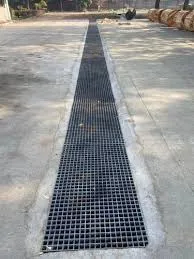
-
 Afrikaans
Afrikaans -
 Albanian
Albanian -
 Amharic
Amharic -
 Arabic
Arabic -
 Armenian
Armenian -
 Azerbaijani
Azerbaijani -
 Basque
Basque -
 Belarusian
Belarusian -
 Bengali
Bengali -
 Bosnian
Bosnian -
 Bulgarian
Bulgarian -
 Catalan
Catalan -
 Cebuano
Cebuano -
 China
China -
 China (Taiwan)
China (Taiwan) -
 Corsican
Corsican -
 Croatian
Croatian -
 Czech
Czech -
 Danish
Danish -
 Dutch
Dutch -
 English
English -
 Esperanto
Esperanto -
 Estonian
Estonian -
 Finnish
Finnish -
 French
French -
 Frisian
Frisian -
 Galician
Galician -
 Georgian
Georgian -
 German
German -
 Greek
Greek -
 Gujarati
Gujarati -
 Haitian Creole
Haitian Creole -
 hausa
hausa -
 hawaiian
hawaiian -
 Hebrew
Hebrew -
 Hindi
Hindi -
 Miao
Miao -
 Hungarian
Hungarian -
 Icelandic
Icelandic -
 igbo
igbo -
 Indonesian
Indonesian -
 irish
irish -
 Italian
Italian -
 Japanese
Japanese -
 Javanese
Javanese -
 Kannada
Kannada -
 kazakh
kazakh -
 Khmer
Khmer -
 Rwandese
Rwandese -
 Korean
Korean -
 Kurdish
Kurdish -
 Kyrgyz
Kyrgyz -
 Lao
Lao -
 Latin
Latin -
 Latvian
Latvian -
 Lithuanian
Lithuanian -
 Luxembourgish
Luxembourgish -
 Macedonian
Macedonian -
 Malgashi
Malgashi -
 Malay
Malay -
 Malayalam
Malayalam -
 Maltese
Maltese -
 Maori
Maori -
 Marathi
Marathi -
 Mongolian
Mongolian -
 Myanmar
Myanmar -
 Nepali
Nepali -
 Norwegian
Norwegian -
 Norwegian
Norwegian -
 Occitan
Occitan -
 Pashto
Pashto -
 Persian
Persian -
 Polish
Polish -
 Portuguese
Portuguese -
 Punjabi
Punjabi -
 Romanian
Romanian -
 Russian
Russian -
 Samoan
Samoan -
 Scottish Gaelic
Scottish Gaelic -
 Serbian
Serbian -
 Sesotho
Sesotho -
 Shona
Shona -
 Sindhi
Sindhi -
 Sinhala
Sinhala -
 Slovak
Slovak -
 Slovenian
Slovenian -
 Somali
Somali -
 Spanish
Spanish -
 Sundanese
Sundanese -
 Swahili
Swahili -
 Swedish
Swedish -
 Tagalog
Tagalog -
 Tajik
Tajik -
 Tamil
Tamil -
 Tatar
Tatar -
 Telugu
Telugu -
 Thai
Thai -
 Turkish
Turkish -
 Turkmen
Turkmen -
 Ukrainian
Ukrainian -
 Urdu
Urdu -
 Uighur
Uighur -
 Uzbek
Uzbek -
 Vietnamese
Vietnamese -
 Welsh
Welsh -
 Bantu
Bantu -
 Yiddish
Yiddish -
 Yoruba
Yoruba -
 Zulu
Zulu
fiberglass grid
Understanding Fiberglass Grids A Comprehensive Overview
Fiberglass grids are increasingly gaining recognition in various industries for their unique properties and versatile applications. As a composite material, fiberglass is made from fine strands of glass that are woven together to form a sturdy grid structure. This article will delve into the composition, benefits, applications, and future prospects of fiberglass grids.
Composition and Structure
Fiberglass grids consist of glass fibers that are impregnated with resin, forming a mesh-like structure. The manufacturing process generally involves weaving glass strands into a grid pattern, which is then coated with a resin to enhance its strength and durability. The resulting fiberglass grid is lightweight yet incredibly strong, making it an attractive option compared to traditional materials such as steel or aluminum.
The grid pattern can vary in terms of mesh size and thickness, tailoring the product to specific applications. This customization allows fiberglass grids to meet diverse requirements across different industries, from construction to automotive manufacturing.
Key Benefits of Fiberglass Grids
1. Corrosion Resistance One of the primary advantages of fiberglass grids is their resistance to corrosion. Unlike metals, fiberglass does not rust or corrode when exposed to harsh environmental conditions, chemicals, or moisture. This property makes it ideal for use in industries like wastewater treatment, chemical processing, and marine applications.
2. Lightweight Nature The lightweight nature of fiberglass grids facilitates easy handling and installation. In construction, for example, designers can reduce the overall weight of structures, leading to lower transportation costs and simpler logistics.
3. High Strength-to-Weight Ratio Fiberglass grids exhibit an impressive strength-to-weight ratio, making them robust yet easy to manipulate. They can withstand significant loads without compromising structural integrity, which is a critical requirement in many applications.
4. Electrical Insulation As an insulator, fiberglass grids are effective in applications requiring electrical resistance. This property is essential in environments where electrical hazards may be present, contributing to the overall safety of installations.
fiberglass grid

5. UV Resistance Fiberglass grids are often coated to resist ultraviolet (UV) damage, prolonging their lifespan when exposed to sunlight. This feature is particularly beneficial in outdoor applications where traditional materials may degrade over time.
Applications Across Industries
Fiberglass grids find utility in a multitude of applications. In the construction industry, they are employed for structural reinforcement, concrete applications, and even as flooring systems in industrial settings. They enhance the durability of structures while minimizing weight.
In the transportation sector, fiberglass grids are used in vehicle manufacturing to create lightweight components, contributing to fuel efficiency and performance. The aerospace industry also leverages these grids for similar reasons, preferring materials that contribute to lower weight without sacrificing safety or performance.
Another significant area of application is the oil and gas industry, where fiberglass grids serve as grating and platforms in offshore rigs, storage tanks, and refineries, thanks to their resistance to harsh chemicals and environmental conditions.
Future Prospects
The future of fiberglass grids looks promising as advancements in materials science continue to evolve. Research is ongoing to enhance the properties of fiberglass, including improved sustainability measures through the use of recycled materials and eco-friendly resins.
Additionally, the construction industry is increasingly turning to fiberglass grids as a solution to modern engineering challenges. As infrastructure projects become more complex, the need for innovative materials that can withstand extreme conditions while being environmentally friendly will drive further adoption of fiberglass grids.
Conclusion
In summary, fiberglass grids offer a unique combination of strength, lightweight properties, and resistance to environmental challenges. From construction to transportation, their versatility makes them an invaluable asset across multiple sectors. As industries continue to seek sustainable and high-performance materials, fiberglass grids are poised to play a significant role in shaping the future of engineering and construction.









